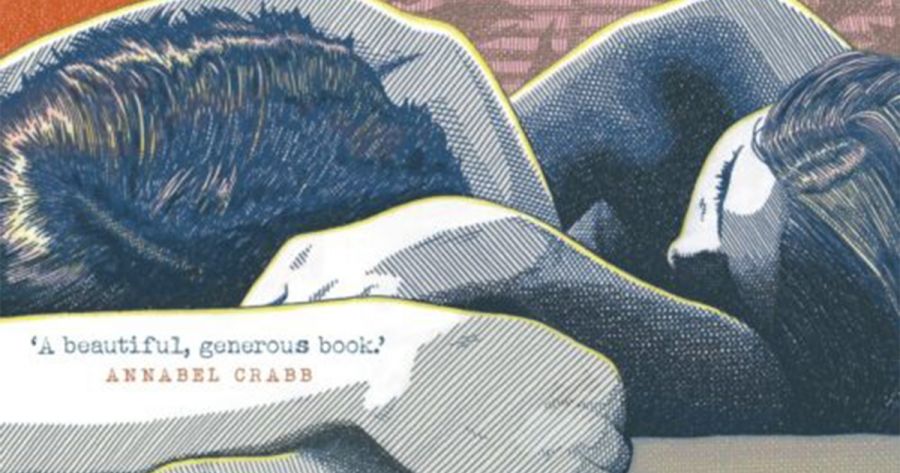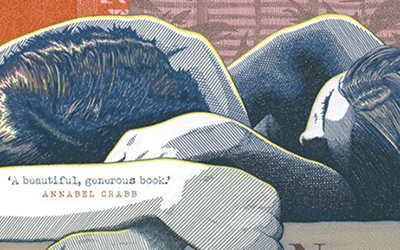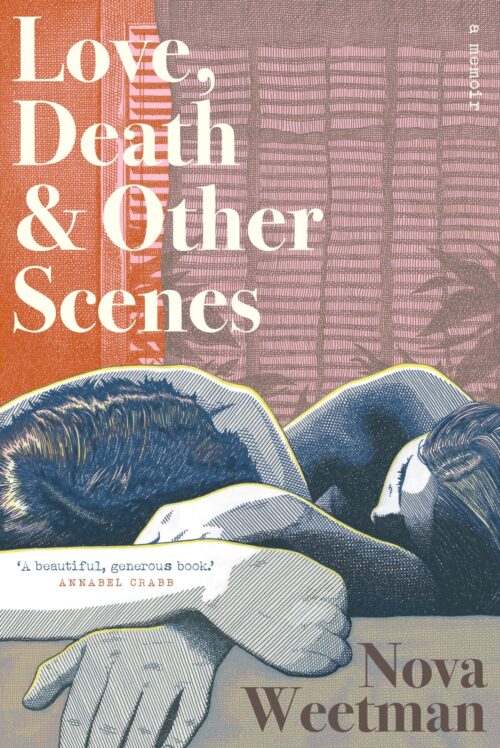
- Free Article: No
- Contents Category: Memoir
- Review Article: Yes
- Article Title: Love’s aftermath
- Article Subtitle: A memoir about what endures
- Online Only: No
- Custom Highlight Text:
In his book Bereavement: Studies of grief in adult life (1972), psychiatrist Colin Murray Parkes wrote: ‘The pain of grief is just as much a part of life as the joy of love; it is, perhaps, the price we pay for love, the cost of commitment.’ His words received a royal edit when Queen Elizabeth II, speaking at a memorial for the victims of 9/11, said, simply: ‘Grief is the price we pay for love.’ Being the queen, she could take such a liberty, denying Parkes his preamble and his ‘perhaps’. She whittled his words into a more essential and potent truth at a time when it was needed (if there’s ever a time when it’s not), ‘queensplaining’ his question as a comforting answer to the bewildered and bereaved.
- Featured Image (400px * 250px):

- Alt Tag (Featured Image): Tracy Ellis reviews ‘Love, Death & Other Scenes’ by Nova Weetman
- Book 1 Title: Love, Death & Other Scenes
- Book 1 Biblio: University of Queensland Press, $34.99 pb, 279 pp
- Book 1 Cover Small (400 x 600):

- Book 1 Cover (800 x 1200):

In Love, Death & Other Scenes, Nova Weetman, author of several books for young readers, writes fresh from the loss of her partner of twenty-five years, playwright Aidan Fennessy, who died of prostate cancer in 2020, aged fifty-three. (The couple had two children together.) In each chapter, Weetman explores the stages and origins of her grief, from memories of how the pair met and her own past and upbringing, to the hard practicalities of medical procedures and moving house; downsizing and dealing with belongings left behind.
‘Grief is not chronological … It is random and episodic and doesn’t follow a pattern,’ writes Weetman. While her thoughts are organised into three acts, like one of Fennessy’s plays, the action is more backstage; it provides an insight into the messy lives of an artistic couple in inner Melbourne, dealing with children, Covid, and cancer. At the heart of the book is Fennessy’s illness, as he is first diagnosed and then succumbs, but the tragedy is folded into a love story, with warmth and humour, and a sense of their colourful lives before he died and the silence in the space left after.
The book is also a record of life in Melbourne during lockdown, the city that endured some of the toughest restrictions in the world. If Fennessy had been hospitalised, there would have been no visitors allowed, so Weetman cared for him at home, a period she describes as a ‘patchwork of oxycodone, chemo, pain and confusion’. There are reminders of the everyday hassles of Covid masks, check-ins, vaccination certificates, and the explanations required to venture beyond the ‘ring of steel’ around the city. When Fennessy’s body is sent to a regional funeral home, the family has to travel so that Weetman can see him one last time, and the children are eyed suspiciously as they op-shop in the unnamed country town. Later, when she is finally able to book a slot to swim at the local pool, it is sweet relief to be able to float, glide, and move with a sense of freedom again.
Weetman’s reflections are honest and unvarnished, but there is a tendency to skim the surface. It could be the practised restraint of writing for a younger audience or an unwillingness to consider deeper implications, protecting herself from thinking certain things, or her loved ones from reading them.
There is a skirting around sensitive subjects, like the tentative start to her relationship with Fennessy, where it is not salacious detail that’s missing but a sense of chemistry or desire. Other important information is introduced awkwardly and explained later. The first mention of Fennessy’s breakdown is slipped into the text like something incidental. Weetman later reveals that his total inability to function left her to manage alone with their children for a long time while he stayed elsewhere. In a compounding tragedy, he eventually recovers, gives up alcohol, and returns to the family home, only to be diagnosed with metastatic cancer three years later.
After Fennessy’s death, their daughter finds an unaddressed love letter. Weetman is sure it was meant for her, but misses an opportunity to delve into the inevitable insecurities, if not infidelities, in any long-term relationship. In the back and forth of the narrative, the thread is sometimes momentarily lost. Significant signposts, like the precise age of the children at given times throughout the ordeal, or the layout of the house with its upstairs kitchen, or exactly where Fennessy is when he is ‘in another city’, are sometimes obscured.
When Weetman does plumb the depths and find the answers beneath her questions, the words are powerful. In the chapter titled ‘Lasts’, she recalls their last outing together, and other ‘lasts’ that crept up on them as Fennessy’s condition deteriorated. Similarly effective are her words on his absence and the role the ‘other’ plays in our lives. ‘Aidan’s death has left me with hundreds of hours of unsaid words … I long for a witness. Someone to share moments with … I worry that I’m disappearing, becoming a person who never fully tells the truth.’
What is certain is a sense of the profound loss of Fennessy and the poignancy of his plays, such as The Architect, completed after his diagnosis, and The Heartbreak Choir, his final play, staged after his death. Also left is the love between the two writers, who gave each other permission to pursue their dreams with courage, tenacity and a strong work ethic. It is some kind of consolation when, at the end of the book, Weetman finds herself writing in a room in the Victorian State Library where some of her Young Adult books face a copy of The Heartbreak Choir, reassuring evidence of their efforts and their life together.


Comments powered by CComment